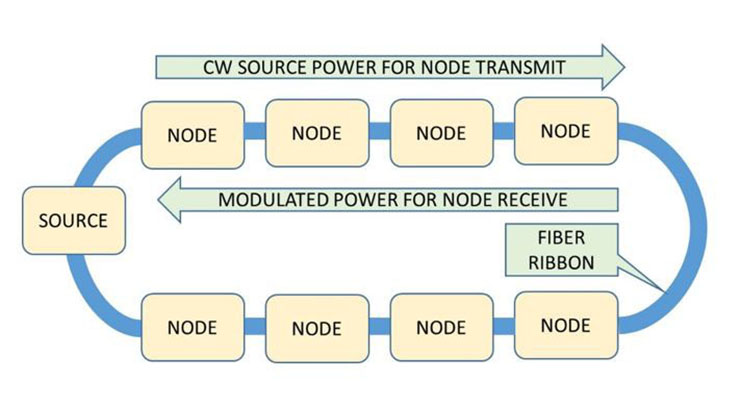Counter Directional Optical Network Using Ribbon Fiber
ID# 2017-4570
Technology Summary
This invention is a novel architecture for routing optical signals in fiber optic networks (video, data, RF/analog). Connection cost is minimized using ribbon fiber; multiple fibers connect in one splice or connector. Different fiber types can be included in one ribbon. Cost is further reduced by transmitting signals in both directions in each fiber. This architecture works in rugged environments; sensitive source components are isolated in the source bank. Source signals can be made more useful with pre-modulation (clock, analog controls, time correction, pre-distortion, OCDMA). Because the node design switches between fibers without demodulation, the design accepts all modulation types. Nodes can be implemented using discrete components or any integration platform (Si photonics, SOI, hybrid Si/Ge, hybrid Si/III-V). There is minimal need for network-wide monitoring and control.
Application & Market Utility
This network approach is meant for situations where network connectivity must be provided for the most difficult protocols, including digital and analog/RF. The source bank provides time correction and pre-distortion for EW applications. Isolation of the source bank allows nodes in adverse environments; the source can be in an aircraft fuselage, while the nodes are remotely in the wings. Switching is done between fibers maximizing isolation between signal paths. Use of WDM or DWDM within each fiber is accommodated; allowing use as a backbone for WDM or DWDM sub-networks.
Next Steps
Seeking research collaboration and licensing opportunities.

